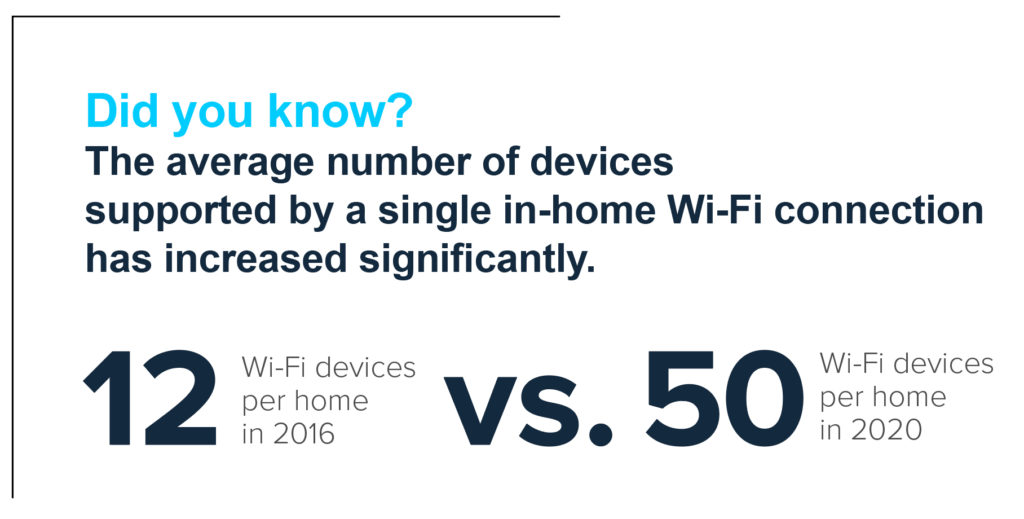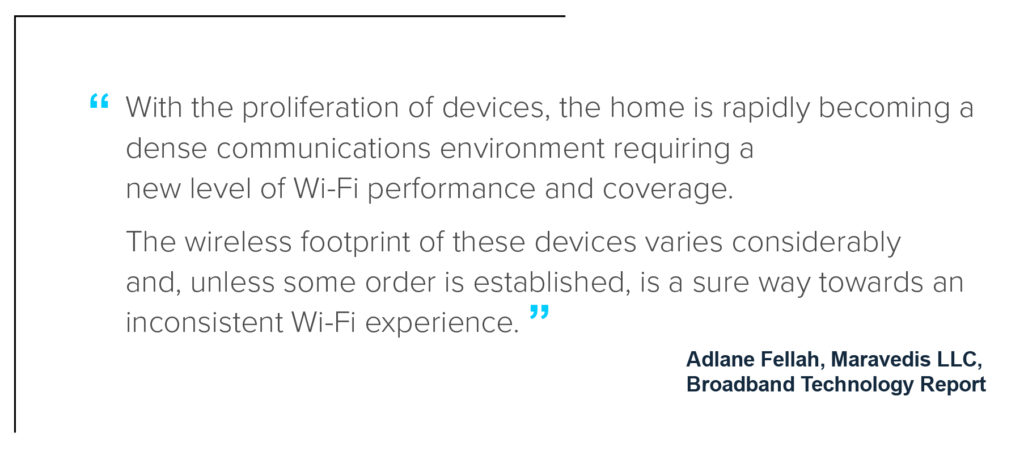Does your Wi-Fi offering stand out in the crowd?
Or, is your home internet messaging squarely fixed on the ‘fast, faster, fastest’ speed wagon?
Despite my title, of course speed is a major factor in the quality of the in-home Wi-Fi experience. The ultimate expectation of an end user is fast, reliable, seamless Wi-Fi. As you already know though, that value proposition isn’t easily delivered.
But that doesn’t mean there isn’t a real opportunity.

ISPs are moving beyond speed to whole-home Wi-Fi.
In a recent article, Light Reading’s Jeff Baumgartner suggested operators should be embracing the business opportunity that is available as a result of the increased demand for in-home Wi-Fi.
“Adding a premium whole-home Wi-Fi service to the mix enables cable operators to extend a lucrative business of leasing access to consumer premises equipment while also enhancing their presence in the broadband customer’s home.”
Baumgartner adds, “Owning the home Wi-Fi network — or at least having deeper visibility into the Wi-Fi network and providing systems that can understand changing traffic conditions and steer tablets, PCs and other devices to the optimal band or channel — could also prove to be a major operational benefit to cable operators and other ISPs. Since consumers tend to call the ISP whenever Wi-Fi related troubles arise, having this additional management layer is helpful in troubleshooting problems and reducing the need for costly truck rolls.”

Why is installation key to differentiating the Wi-Fi offering?
The opportunity to differentiate your customer’s in-home Wi-Fi starts with day one, and it isn’t simply a matter of the creating a good first impression. Whether it is the proliferation of devices, physical density of the environment, chipset quality or devices from neighbouring residences creating interference, ‘first-time right’ installation is crucial.
Some operators we have worked with confirm that up to 40% of technical-related churn is Wi-Fi related, as are 60% of support calls. What’s more is that many acknowledge (and this report confirms) that poor access point placement is the No. 1 cause of Wi-Fi related service calls.
Three reasons to focus on ‘first-time right’ installation:
- Control a key factor of NPS
Over 70% of internet traffic flows through in-home Wi-Fi, particularly high consumption activities such as streaming which depend on ultra-fast ping times and low latency. By optimizing installation from day one, certifying Wi-Fi coverage and integrating the AP into assurance processes, service providers can be confident that initial installation meets customer expectations. - Upsell and gain business intelligence
Satisfied customers stream high value content and upgrade their services. Understanding how those customers consume that data and programming is a powerful tool, both for competitive analysis and service improvements. Integrating data from the day of installation drives better decisions and customer conversions. - Assuring ongoing QoE starts with day one
By way of a proper and more complete service installation – and a faster, more reliable workflow process – Wi-Fi commissioning is more efficient and cost effective. When that installation can be benchmarked, providers can reduce time to troubleshoot issues, reduce truck rolls and ultimately, prevent churn through higher customer satisfaction.
If these three reasons aren’t enough to reinforce the value of installation and assurance, consider that residential subscribers are now tackling Wi-Fi problems using third-party hardware purchased in retail stores. If that fails to fix their Wi-Fi issues, the blame inevitable circles back to service providers, resulting in even more service calls, churn and expense.
So how can service providers achieve ‘first-time right’ installation?
What I hear from service providers is, ‘Tell me where the problems are. Tell me how pervasive they are. Tell me how to resolve them.’
This approach does just that. First, enabling field technicians with the right toolsets, data and workflows. Then, integrating that data with assurance software and tools to continually optimize the in-home Wi-Fi environment.
- Optimize access point placement using a proven field toolset
- Integrate guided workflows as a part of the SLA
- Analyze and optimize the environment
- Leverage self-healing
- Share certification records
- Integrate the right assurance toolset
Service providers can differentiate Wi-Fi offerings beyond a Mbps speed rating, to own the whole-home Wi-Fi experience. Using this proven approach to achieve ‘first-time right’ installation, it is possible to improve Wi-Fi QoE and Net Promoter Scores.
In the world of Wi-Fi, speed matters but reliability stands out in a crowd.





